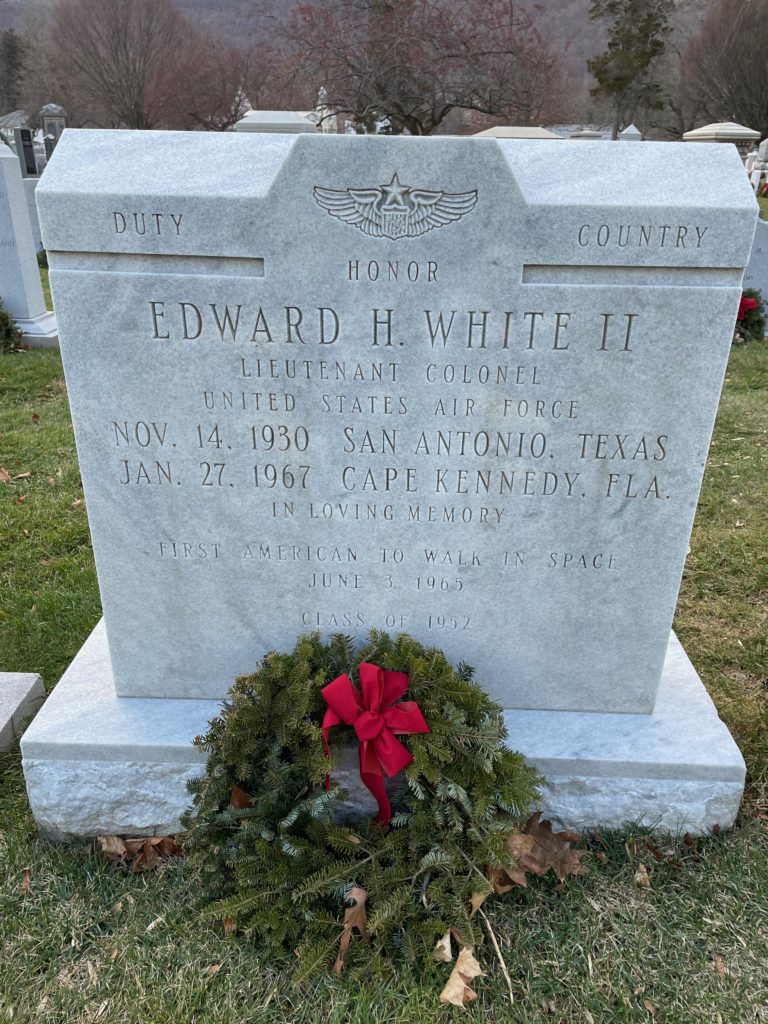Erik Visits an American Grave, Part 1,023
This is the grave of Edward White.

Born in 1930 in San Antonio, White grew up in a military family. His father had graduated from West Point in 1924, was highly interested in the new technology of flying, and later became a major general in the Air Force. From the time he was a kid, White was expected to follow his father. Moreover, his father ensured his boy loved flying as much as he did and started taking him on his non-military flights by 1942. White really wanted to go to West Point like dad, but because the family had moved around so much, they didn’t have any real connections with the congresscritters necessary to get an appointment. So young White wandered the floor of the House one day until he finally found a member of Congress willing to write him a letter, which proved successful.
White was an excellent athlete at West Point, almost making the 400 meter hurdles team for the 1952 Olympics. But of course what really mattered was the military. With the Air Force now a thing, White joined it as a second lieutenant after he graduated. That was necessary for the time between the creation of the Air Force and when the government could get the Air Force Academy and turn out classes of graduated cadets, which was 1959. Well, White rose quickly. When the space program began, White really wanted to be involved. He got a degree in aeronautical engineering to improve his chances and also became a test pilot for experimental military planes.
In 1962, NASA selected its second round of potential astronauts. White made the cut. He became the flight control system specialist on Gemini 4, which reached space in 1965, on a four day mission. White even got to make a spacewalk, the first American to do so. Upon return, White was promoted to lieutenant colonel, LBJ met with he and his fellow astronaut on the mission, and they became celebrities.
Soon after, White was selected for the Apollo program. This was the big new program intended to replace Gemini and hoped to land a man on the moon. He, Gus Grissom, and Roger Chaffee were the astronauts selected for the mission. A few weeks before the launch, in late January 1967, the three men went into the capsule to run tests. But while they were in there, the capsule caught fire. They never had a chance. There were protocols for putting out fires, but as this was the first time this had happened, they didn’t really work very well. Let’s face it, flying in space is very, very dangerous and even the preparations for it were back then. White was 36 years old.
Yes, the Apollo program would succeed and then put a man on a moon in 1969. But then…well, who cares. Manned space flight is a gigantic waste of time and money, not to mention fossil fuels and natural resources. I can understand why you would want the Hubble telescope and now its successor. I of course see the need for satellites. But manned space flight? Colonizing the moon or Mars? Why? It’s never, ever, ever going to happen. Nor should it. We live on this planet. It’s all we have. We should prioritize saving it rather than engage in pipe dreams of space. Though if billionaires want to launch themselves into the sun, I do not object.
Edward White is buried in the U.S. Military Academy Cemetery, West Point, New York.
If you would like this series to visit other astronauts, you can donate to cover the required expenses here. Gus Grissom is in Arlington and Jack Swigert is in Wheat Ridge, Colorado. Previous posts in this series are archived here.


